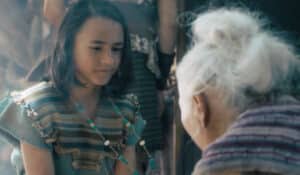Guest post by Lindsey Jarman
In making this lesson, I owe a debt of gratitude to Reverend Dr. Fatimah Salleh and Margaret Olsen Hemming for their book, The Book of Mormon For the Least of These. Their book has opened up the Book of Mormon for me in new and beautiful ways and I hope this lesson will help you to do the same for children.
Teaching Jacob 5-7 to Children–Introducing Allegory, Critical Thinking, and Combating Spiritual Abuse to Children
Introduction
“I have lived to see the time foreseen by the prophet Zenos in the allegory of the olive tree, when the righteous from all nations of the earth would become partakers of the covenant of God with Israel. I have seen the good fruit of the gospel blossom in my home continent of Africa. After just 30 years, there are 300,000 Saints. In the doctrines and principles of the restored gospel, many are finding a sure anchor for their faith.” Joseph W. Sitati, “Blessings of the Gospel Available to All”
- Introduce the lesson to the children by saying, “In Jacob 5 we can read the Allegory of the Olive Tree that was told by the prophet Zenos and written down by Jacob. Before we talk about the Allegory of the Olive Tree, let’s learn what an allegory is.”
- “An allegory is a story that has an extra meaning to it. For example, you might have heard the story of The Tortoise and the Hare before (summarize this Aesop’s Fable for the children or tell the story if they are unfamiliar with it). At first this seems like it’s just a story about a hare who loses a race because he thinks he is so fast that he can take a nap and still win, but if we think a little more about the story there is more to it. The story wants us to learn that even if it takes us longer to do something, it’s okay. As long as we keep trying we can be successful.”
- “Now I am going to tell you another allegorical story. This story comes from Africa and it is about a character named Anansi, who is a spider. There are lots of stories about Anansi in Africa. While I tell the story, think about what extra meaning this story might have.”
Anansi the spider knew how to cook, but he didn’t like to do it. He didn’t like how long it took for the food to be ready and he definitely didn’t like cleaning up afterwards. So instead of making his own food, Anansi liked to go around to his neighbors and see what they were cooking. One day he went to visit rabbit. He immediately smelled something delicious. “Yum! Yum! Rabbit,” he said, “that sure does smell delicious. May I have some?”
“Sure”, said rabbit, “but it’s not quite finished. Why don’t you help me make dinner and then we’ll eat together?” Well, Anansi definitely didn’t want to do any cooking. “I have a better idea,” he said to Rabbit. “I will spin a web and tie one end to my foot and you can tie the other end to the pot. When the food is done, tug on the web and I’ll come back.” Rabbit thought that was okay, so Anansi made a web and tied one end to his foot and the other end to Rabbit’s pot. Then he went on his way.
When he came to Monkey’s house, he smelled a smell that was even more delicious than the smell at Rabbit’s house.“Yum! Yum!” He said to Monkey, “That smells delightful! May I have some?”
“Of course,” said Monkey, “but it’s not quite finished. Why don’t you help me make dinner and then we’ll eat together?” Now Anansi still did not want to help with cooking. So he told Monkey the same thing he had told Rabbit and Monkey thought that was just fine. So he tied one end of another web to a different foot and the other end of that same web to Monkey’s cooking pot and went on his way.
The same thing happened when Anansi passed by all of his neighbor’s houses, until Anansi had a web tied to each of his eight legs.
“This is a wonderful idea!” thought Anansi, “Tonight I will be able to eat eight delicious dinners and I won’t have to cook or clean up a single one!”
Just then Anansi felt a tug at the web of one leg. “Dinner time!” he shouted. But then a pull came at another leg and another and another and Anansi was being pulled in all directions by the web strings tied to his legs. As he was pulled, his legs got thinner and thinner until until they were so thin they slipped right out of the knots he had tied in the webs.
“Oh my!” he said, “Maybe that wasn’t such a good idea after all!”
- “Think about this allegory about Anansi. It is a fun story, but it is also trying to tell us a message. What do you think the message might be?” Accept and validate all of the children’s answers, encouraging them to expand on their ideas.
The Allegory of the Olive Tree
- “In the Book of Mormon, Jacob wrote down an allegory that he had read on the brass plates that Nephi took from Laban. It’s called the Allegory of the Olive Tree and it was originally told by a prophet named Zenos. Listen to me tell you the allegory and while I am telling it to you I want you to think about what the deeper meaning might be.” If appropriate, have the children act out the allegory while you tell it, having them take the part of the Lord of the vineyard, the servant, and even the tree and the branches.
Israel is like an olive tree that a man planted in his vineyard. The olive tree grew old and started to die, so the man came and took special care of it. He pruned it, and dug around it, and gave it special plant food. The tree grew new branches, but the top was still dying.
The man’s servant came to help him in the vineyard and the man told him about how sad it made him to see his tree dying. He told his servant they should take off the new branches that grew on the tree and plant them in other places so that new trees will grow and save the fruit of the old tree. Then they should take branches off a a wild tree and graft them on to the old tree. So they did those things and then they waited.
After a while, the man and his servant went back to the vineyard to check on things. First they went to the old tree and saw that it was good! The wild branches they had grafted on were growing good fruit! So they went to check on the new trees they had planted from the new branches. The first branch was growing well and had grown a lot of new fruit. They gathered the fruit and the servant said he was surprised because this branch had been planted in very poor ground. The man said he knew it was a poor spot and he had been taking care of the branch for a long time. The second branch they checked on was also doing well, even though the ground was even worse, because the man had been taking special care of it too.
Then they went to check on the third branch they had planted, and even though the man had planted it in the best spot and taken care of it too, only half of the branches on the new tree had good fruit. The man wanted to burn all of the branches that had bad fruit, but the servant asked if they could try taking care of the new tree first. So the man and the servant took care of the tree to see they could get it to grow good fruit.
- Stop here and ask the children. “What do you think of this story so far? The man and his servant are working very hard to save the tree, even though at the beginning of the story, the tree is not giving them any fruit? What do you think that means?” Listen to and acknowledge all of the children’s answers. Encourage them to build upon each other’s thoughts and share their genuine feelings. Allow them to put themselves in the perspective of the tree, the servant, or the man as they share. Allow them to compare the story to their own lives or to communities in general and let them take ownership of the meaning of the allegory. “In the story, sometimes the man tells the servant what to do and sometimes the servant gives the man ideas. What do you think that means?” Listen to and acknowledge all of the children’s answers. Encourage them to build upon each other’s thoughts and share their genuine feelings.
After a long time the man and the servant went back to check on the old tree and the new trees that had grown from the branches. They found that the old tree was growing new fruit, but when the man tasted the fruit all of it was bad, even though they had worked so hard to help the tree. Then they went to check on the new trees that had grown from the branches. They found that the first and second new trees were growing wild fruit and the wild fruit that had grown on the third new tree had corrupted it so much that the third new tree had died. And the man was so sad that he cried and he said “What more could I have done for my trees!” And the man told the servant that they should cut all of the bad trees down and throw them into the fire. But the servant asked if they could try a little longer.
- Stop here and ask the children, “What do you think this part of the story means? What does it mean that the man and servant worked so hard but the trees were still growing bad fruit and one tree had even died?” Listen to and acknowledge all of the children’s answers. Encourage them to build upon each other’s thoughts and share their genuine feelings. “What do you think it means for the servant to ask the man to wait a little longer?” Continue encouraging the children to share.
So the man and the servant called in more servants to help them, but only a few came, and they all worked very hard to take care of the trees one last time, and good fruit started to grow again, and they threw away any branches that grew bad fruit until all of the fruit was good again. And when the man saw that it was good he called all of the servants together and they were all very happy.
- Ask the children “What do you think of the story? Why did only a few more servants come to help? What do you think it means to throw away the branches that are growing good fruit?”
- “Jacob tells us that the Allegory of the Olive Tree can help us understand Heavenly Father’s relationship to Israel. In the allegory, Heavenly Father is like a man that takes care of a tree. What is your relationship with Heavenly Father like? Draw or write an allegory that describes what your relationship with Heavenly Father is like.”
- “After Jacob tells the story of the Allegory of the Olive Tree (that was first told by the prophet Zenos), he tells about a man who tried to convince the Nephites not to believe in the coming of Christ and doing the work of God. He does this in three ways. First, he flatters them. Flattery means to tell someone nice things in order to get them to do what you want them to do. Second, he tells Jacob that the hard work he has been doing to bring people to Christ is actually the wrong thing to do. Third, he quotes scriptures in a way to try to make Jacob feel badly about what he is doing (Fatima Salleh and Margaret Hemming, The Book of Mormon for the Least of These, p. 130).
- “Jacob said he “had hope to shake me from the faith, notwithstanding the many revelations and the many things which I had seen concerning these things ; for I truly had seen angels, and they had ministered unto me.’ Jacob knew that his relationship with God and the personal insights he had been given were special. Your relationship with God is special too and the personal revelation he gives you to guide your life is important.
- Draw a stick person on a piece of paper and write “I Can Stick Up For Myself”. On the paper, have the children write (or draw) ways that they can “stick up” for themselves when their personal relationship with God is challenged.






